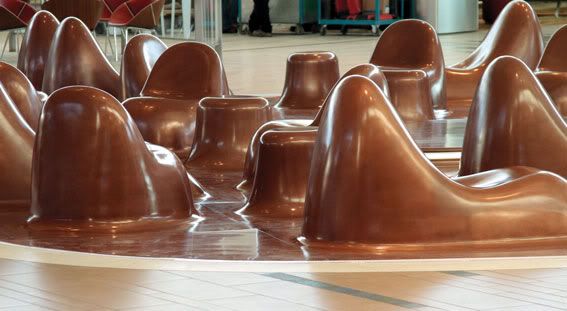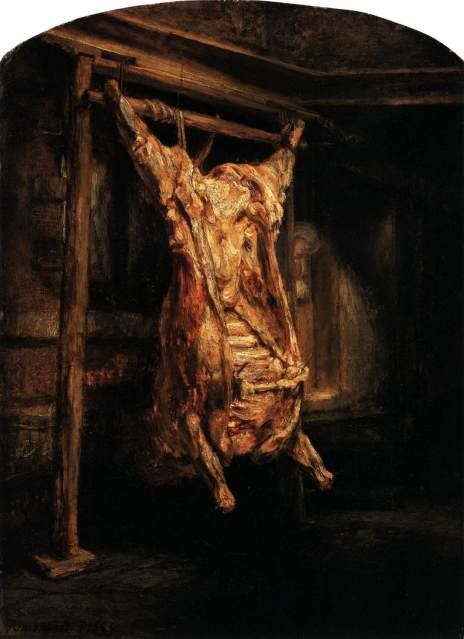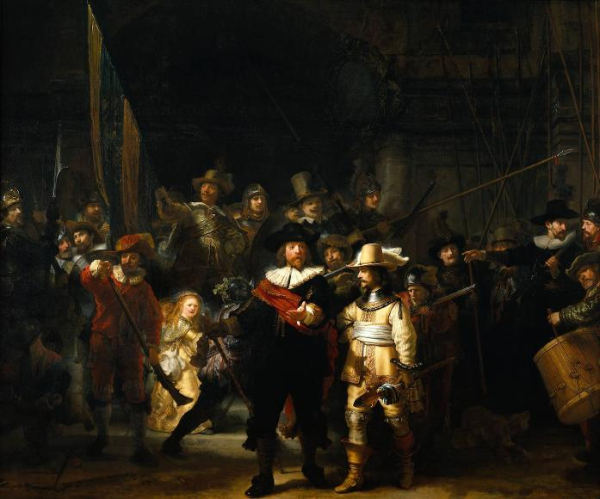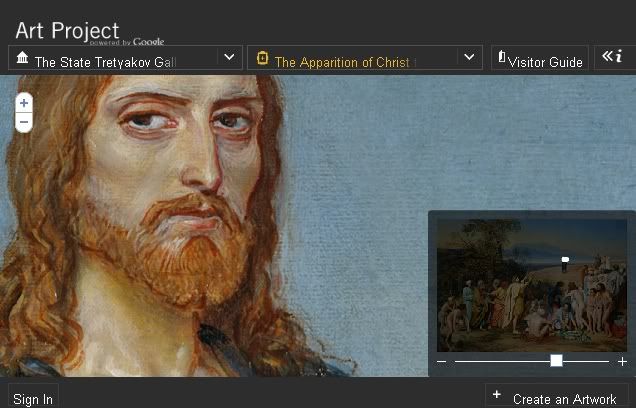The May edition of the Art History Carnival will be posted on Friday, May 4, 2012. You can submit articles for inclusion in the carnival until 48 hours before the issue is "released" (Wednesday, May 2, 2012).
What kind of blog articles will be included?
Posts covering all periods and art mediums are welcome, as are posts discussing art criticism, architecture, design, theory and aesthetics. All submissions will be carefully reviewed, so please, no spam.
What is a Blog Carnival?
According to Wikipedia, a blog carnival is "a type of blog event...similar to a magazine, in that it is dedicated to a particular topic, and is published on a regular schedule, often weekly or monthly. Each edition of a blog carnival is in the form of a blog article that contains permalinks links to other blog articles on the particular topic."
Blog Carnivals are a great way to help your blog reach a new audience and to make new friends in the blogosphere!
Who can submit?
Anyone, as long as you have a blog! And If you don't blog, you can submit one of your friend's articles (except they better be good--I'll be reading them!).
Can I host a carnival?
Absolutely! Please let me know if you'd be interested in hosting the next issue of the carnival.
How to submit articles
You have two options:
1. Use the submission form provided by Blog Carnival (this is easiest!).
2. Send me an email. Include the title and permalink URL of the post you are nominating for inclusion in the carnival, along with the name of the blog. Please put "Art History Carnival" in the title of your email to help me recognize it in my inbox!
One final thing to keep in mind:
To keep things current, posts should have been written after the date of the last Carnival. If a post is six months old, I won't be able to include it in the Carnival, no matter how fabulous it might be.
Thank you again for your participation, and please share the news with other bloggers!
Saturday, April 28, 2012
Call for Submissions: May Issue of the Art History Carnival
Posted by
Margaret
at
10:59 AM
0
comments
![]()
![]()
Friday, April 27, 2012
Kopperscape by Karim Rashid at the Edmonton International Airport
The Edmonton International Airport has unveiled a brand-new public art installation created by internationally recognized Canadian Designer Karim Rashid. The piece is located in the US Departures lounge, which is especially exciting since that was formerly one of the most unexciting places in the airport.
From the EIA Website:
Influenced by Canada’s mountains, snow drifts and rivers, Kopperscape is a signature piece for EIA and a gathering spot for passengers travelling from Canada to the US. Kopperscape is a functional fiberglass sculpture that has seating for passengers and a performance stage for live entertainers.
I've been hearing rumours for some time that Rashid was working on something for our airport, but I was expecting wallpaper. This blew me away, although I was a bit disappointed by the color, which ironically was meant to be reminiscent of the Canadian penny, which is going to be phased out over the next six months. Nevertheless, the 10x10 meter installation is substantial and is an exciting piece of art for our city.
In an interview in the Edmonton Sun, Rashid discussed doing more Canadian projects. The interviewer suggets it might be because it's too expensive for Canadians to hire him. Rashid disagrees:
"I don't think it's about affording," he explains. "I think deep down Canada is still very conservative and they see me as this wild designer."
Rashid may be on to something - Canadians are quite conservative when it comes to their art (and clothes). Perhaps its the northern climate? Nevertheless, Edmonton has become increasingly bold lately when it comes to public art. The city has been enjoying openness to contemporary art, design and architecture following the enormous popularity of our Gehry-esque Art Gallery of Alberta (designed by Randall Stout).
My husband had a chance to see this piece of art, along with many others during a recent tour of the newly expanded Edmonton International Airport. He was especially taken with Michael Hayden's sculpture The Raven, which has been constructed out of "holigraphically-embossed acrylic and mirror polished stainless steel." The piece (shown below) is just one of many exciting new installations that are part of the airport's art program.
Images via flyeia.com
Posted by
Margaret
at
11:17 AM
1 comments
![]()
![]()
Labels: Edmonton, karim rashid, news
Wednesday, April 4, 2012
Art History Carnival April 2012
Welcome to the April edition of art history carnival! Spring is here for many of us (we still have a snowstorm scheduled to arrive in Edmonton tonight, but at least the days are getting longer!), and with Easter coming up this weekend, its certainly the time of year when we are reminded of death and rebirth.
Several of this carnival's posts tend towards the weightier side, and bring to mind some of the less pleasant aspects of the circle of life and of the violent world of our ancestors. I recently read Steven Pinker's The Better Angels of Our Nature: Why Violence has Declined . It's a truly fascinating book that examines why the world today is generally less violent than it was in the past. His argument is controversial because it flies in the face of many of the myths our society loves to perpetuate, such as the notion of a more peaceful/idyllic past, untarnished by the evils of mass consumerism and modern alienation (dear William Morris was the victim of that particular vision, I'm afraid).
Throughout my life I have known many people who profess to pine for the nasty, brutish and short lives of the martyrs. These people are well aware of the fact that medieval spirituality was informed by horribly violent culture that meant constant encounters with death and torture - and they miss it, because they think it would make them better people (personally, I'm inclined to think that it wouldn't, it would just make them more violent!).
At any rate, art history is filled with constant reminders of the lives of those who have gone before us. I, for one, am incredibly grateful to be living in the world of Google's Art Project, rather than that of Rembrandt's Night Watch or The Roettgen Pietà (pictured below)!
art history
As a historian, I have always been struck by the immediacy of death in Europe during the Medieval period. Death was everywhere, and people were intimately aware of its horrors in a way that we "moderns" find difficult to comprehend (with the possible exception of persons living today in areas entrenched in tribal warfare). Nowhere is this more evident than in the religious iconography from that time. Medieval religious art dwelt heavily on the graphic suffering of Christ in a way that seems extreme to us, but was part of everyday life to the people of that time. David Byron examines this phenomenon in greater detail in his post This Is My Body, found at Baroque Potion. I found his comparison of the Florentine and German portrayals of Christ's death particularly intriguing. He notes that while the "anonymous German elicited an emotional response by displaying exaggerated poses, wounds, expressions, and scale, the Florentine invites the viewer to consider the same thematic and theological antinomies without reference to the wretchedness of disproportion, death, and decay." I would be tempted to argue that this reflects the fact that, no matter how difficult life in Florence at the close of the Medici rule, it was rather worse in Germany, and this was reflected in their art!
In another somewhat grisly (or should I say, "gristly"? Oh dear, bad pun!), art historian Monica Bowen examines the use of meat in art and the relationship between "the “masculine” consumption of meat" and "the sexual consumption and objectification of women." It's a fascinating post, and the comments are definitely worth a read as well! (I love that she threw Lady Gaga in there for good measure).A Meaty Post posted at Alberti's Window.
"The art history behind "Night Watch", one of the most acclaimed Rembrandt paintings, continues to amaze. Not only is its nickname, "Night Watch", a misnomer, but also some art historians speculate that Rembrandt included himself in this masterpiece. That was before "Night Watch" was trimmed on four sides to fit into a new display space!" Susan Benford presents Rembrandt Paintings: Night Watch posted at Famous Paintings Reviewed.
Could this be a painting of Mary Magdalene? Francis DeStefano muses over the subject matter of Titian's "Flora" in his post Titian: "Flora" , on his blog Giorgione et al....
Google's Art Project has grown at an astounding rate and provides an incredible resource for art historians and anyone with an interest in art. Hasan Niyazi gives a fantastic update on the project in his post Google Art Project and the CED, posted at Three Pipe Problem.
architecture
Hels presents Iconic Sydney Harbour Bridge: 1932-2012 posted at ART and ARCHITECTURE, mainly, saying "like every other piece of architecture that came to dominate its city's skyline, the Sydney Harbour Bridge had a long and contested history. From architect Francis Greenway's first proposal in 1825, to the premier opening the completed bridge in 1932, the post examines the sourcing of raw materials, and the contribution of the architects, builders and public transport designers."
That concludes this edition. Submit your blog article to the next edition of
art history carnival
using our
carnival submission form.
Past posts and future hosts can be found on our
blog carnival index page.
Technorati tags:
art history carnival, blog carnival.
Posted by
Margaret
at
12:32 PM
5
comments
![]()
![]()
Labels: blog carnival









